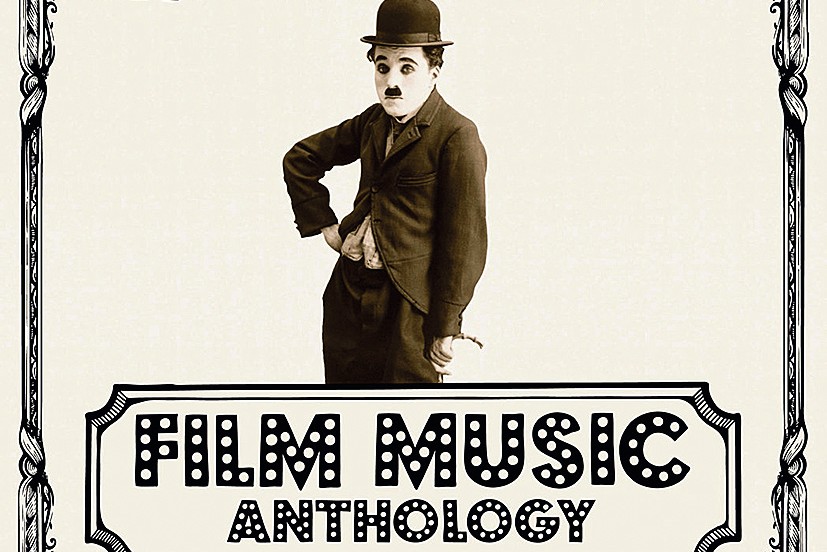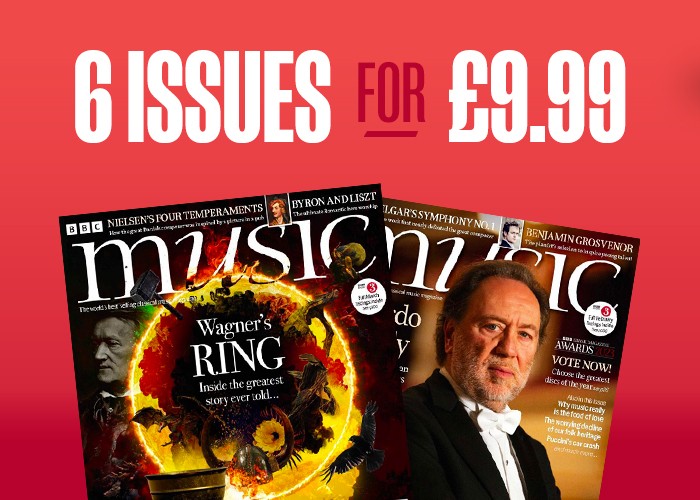Charlie Chaplin: why the movie legend should also be remembered for his hidden musical talent
His name and face are iconic, but what about the music? Jim Lochner explores the genius of Charlie Chaplin, an Oscar-winning composer

For most people, Charlie Chaplin’s musical legacy rests with the classic song Smile. But in a musical career that spanned over 50 years, Chaplin wrote over two-dozen published songs and composed nearly 900 minutes of film music – an astonishing achievement for someone who could not read or write music.
Charlie Chaplin relied on a string of musicians to transcribe, arrange and orchestrate his musical vision, but working with Chaplin wasn’t easy. In his autobiography, Charles Chaplin Jr. remembered watching ‘a man who couldn’t read a note and knew nothing of the mechanics of the art, work at being a composer – and drive men mad.’
Chaplin’s musical journey begins in the shadow of the English music halls. His parents had separate careers as music hall songwriters and performers, and Chaplin’s early exposure to the melodramatic songs of the day later bloomed in the numerous Victorian waltzes he wrote for his films and, most notably, in his Academy Award-winning score for Limelight. But a childhood spent in and out of the London workhouses and boarding schools for ‘orphans and destitute children’ meant Chaplin’s musical dreams had to wait until he could afford them.
Did Charlie Chaplin play any musical instruments?
At age 16, Chaplin bought a violin and cello. He later carted the instruments around on tour as a member of the Fred Karno sketch comedy troupe, taking lessons from the musical directors of the various theatres.
Chaplin admitted he could ‘pose well’ with the cello, ‘but that’s about all.’ His violin was specially made, however, with a reversed fingerboard and strings strung backwards, because he felt he had greater dexterity in the fingers of his right hand.
Stan Laurel, Chaplin’s room-mate on the 1912 US Karno tour, later told author John McCabe that Chaplin ‘would practise for hours … I wouldn’t call him a good violinist, but he sure as hell wasn’t a bad one.’
More like this
What music did Chaplin compose?
The earliest strains of Chaplin the composer begin in 1916 with the founding of the Charlie Chaplin Music Publishing Company, which published two of his songs (Oh! That Cello and There’s Always Someone You Can’t Forget) and The Peace Patrol, an instrumental march that Chaplin also conducted with John Philip Sousa’s band at The Hippodrome in New York. The company, according to Chaplin, sold only three copies and it folded after a month.
From 1921, Chaplin asserted greater authority over the music in his films. He helped compile the scores for The Kid, A Woman of Paris, The Gold Rush and The Circus, and co-wrote two Gold Rush promotional songs (Sing a Song and With You, Dear, In Bombay).
With the arrival of sound, Chaplin was ready to put his own musical stamp on his films. From 1931-67, he composed original music for every feature from City Lights through to his final film, A Countess from Hong Kong, followed by reissues of the remaining silent shorts and features for which he still owned the copyright. He composed his final score for the 1976 reissue of A Woman of Paris – aged 86.
What inspired Charlie Chaplin?
Chaplin said that everything he knew about music he learned from the phonograph. At home, he often turned off the lights after dinner, and the family would listen to classical music records by candlelight. ‘He knew a good deal about music,’ said David Raksin, arranger on Modern Times. ‘And what he didn’t know, he would pick up from everybody.’ ‘Everybody’ included many of the leading lights in music. Chaplin had never heard of Debussy when he met him while on tour with Karno in Paris in 1909.
But he often said the meeting was one of the highlights of his career, and later paid homage to the French master by interpolating Prélude à l’après-midi d’un faune in his reissue scores for Pay Day and Sunnyside. Jan Paderewski, Leopold Godowsky and Feodor Chaliapin visited Chaplin at his studio, a 14-year-old Yehudi Menuhin joined him on the set of City Lights, and David Raksin brought his composition teacher Arnold Schoenberg (and his wife, Gertrude) to the Modern Times set.
At home, Chaplin hosted Rachmaninov and Rubinstein, and even claimed (perhaps apocryphally) to have played ‘a bit of Bach’ on his violin for Jascha Heifetz over dinner. Once Chaplin moved to Switzerland in 1952, he continued to entertain a host of celebrated musicians, including Isaac Stern, Rudolf Serkin, Leonard Bernstein, Pablo Casals, Clara Haskil and Petula Clark.
In the 1930s, Stravinsky approached Chaplin about doing a film together, but the deeply religious Stravinsky thought Chaplin’s idea – a nightclub floorshow of the Crucifixion – was sacrilegious. Chaplin became friends with composer Hanns Eisler after meeting at a party. Eisler briefly assisted with the music for Monsieur Verdoux until he was called before the House Un-American Activities Committee and blacklisted. Chaplin offhandedly offered Eisler the chance to score a proposed reissue of The Circus, primarily to help his friend financially, but that ended when Eisler was deported. (Eisler’s Circus cues became the six movements of his Septet No. 2.)
As Chaplin wrote in his autobiography, ‘I tried to compose elegant and romantic music to frame my comedies in contrast to the tramp character, for elegant music gave my comedies an emotional dimension. Musical arrangers rarely understood this. They wanted the music to be funny. But I would explain that I wanted no competition, I wanted the music to be a counterpoint of grace and charm, to express sentiment.’
Did Charlie Chaplin write music?
But getting it down on paper seldom included ‘grace and charm’. David Raksin and Eric James, Chaplin’s music associate for the last 20 years of his life, claimed Chaplin used only the first three fingers of his right hand on the piano. He ‘would try to indicate with his limited playing ability what he was after,’ James wrote in his autobiography, ‘and I would immediately change places and try to create the melody line that I felt he was searching for. It was like a game of musical chairs!’ An even bigger challenge was transcribing Chaplin’s singing, which was ‘as out of tune as his playing and I used to dread this form of composition.’
Composer and conductor Timothy Brock, who has reconstructed most of the Chaplin scores for live performance, says, ‘Chaplin also got inspiration from pieces he loved and tried to write his version of that.’ Brahms, Tchaikovsky, and Wagner, his favourite composer, play major musical roles in Chaplin’s scores – from direct quotes in The Gold Rush, The Kid and The Great Dictator to a Tchaikovskian ballet solo in Limelight and ethereal Wagnerian strings in the finale of City Lights.
At times, Chaplin would jot down on paper the names of famous pieces of classical music that contained the notes he required for a melody, like ‘first two notes of Grieg’s “Morning”’ or ‘next four notes, those in the opening bars of Liszt’s Liebestraum’. Chaplin’s equally unorthodox orchestration technique of apportioning music to the violins, winds, brass, etc. phrase by phrase ‘was the most arduous and difficult way I’ve ever heard of in music composition,’ James says. ‘It was amazing how, from this, music would emerge that was both acceptable and correct, fitting to the mood of the pictures.’
Chaplin would also tell his collaborators ‘this part should be more Chopin’ or ‘make this Wagnerian’. During the composition of Modern Times, Chaplin told David Raksin, ‘a little Puccini would go well here,’ and the melody for Smile was born. ‘[It] was not Puccini by any means,’ Raksin said in a 1992 video interview, ‘but you can certainly see what he meant. It had that kind of melodic, all-out expressiveness.’
‘Chaplin’s melodies were as melodic as works by Fritz Kreisler or George Gershwin,in many cases,’ says violinist Philippe Quint, who recently released Chaplin’s Smile, an album of Chaplin melodies for violin and piano. ‘Some melodies were reminiscent of Tchaikovsky and Rachmaninov and Debussy and Brahms. But as Leonard Bernstein once said, steal from the best. Chaplin stole from the best and did it very well.’
So why has Chaplin the composer been ignored for so many years?
It starts with Chaplin himself. In an interview for City Lights, he told the New York Telegram, ‘I la-laed and Arthur Johnston wrote it down, and I wish you would give him credit, because he did a very good job. It is all simple music, you know, in keeping with my character.’ And, as Brock points out, ‘Chaplin also had a lot of collaborators over the years who wanted a lot of credit for what he does, which doesn’t help matters. Mind you, his collaborators deserve a lot of credit, but not “I’m the composer of this score” or “I’m the one who did most of the work.” How can that score sound so much like Chaplin and you be the composer? That doesn’t make any sense to me.’
Quint says, ‘I’m a firm believer that with natural talent and a great instinct you can bypass all proper training and do something really good. Chaplin is a legit, prolific composer whose instinct was second to none. I think his music, while basic and simple, speaks to your soul.’
Charlie Chaplin devoted himself ‘completely to the ideal of perfection,’ Meredith Willson, arranger on The Great Dictator, told the New York Herald Tribune. ‘I was constantly amazed at [Chaplin’s] attention to detail, his feeling for the exact musical phrase or tempo to express the mood he wanted.’ Arranger Raymond Rasch said from the set of Limelight, ‘Chaplin’s musical genius is that of organised revolt against conventions combined with perfect feeling for the real thing. … He doesn’t know, just feels, but it’s fabulous!’ But in the words of Chaplin himself: ‘Whatever the melody is, the rest is just a vamp.’
Jim Lochner is the author of The Music of Charlie Chaplin, published by McFarland




